Art & Exhibitions
Kandinsky’s Roving Creative Journey Comes to Life in Amsterdam
"Kandinsky" at the H'ART Museum brings together 60 of the painter's masterpieces.
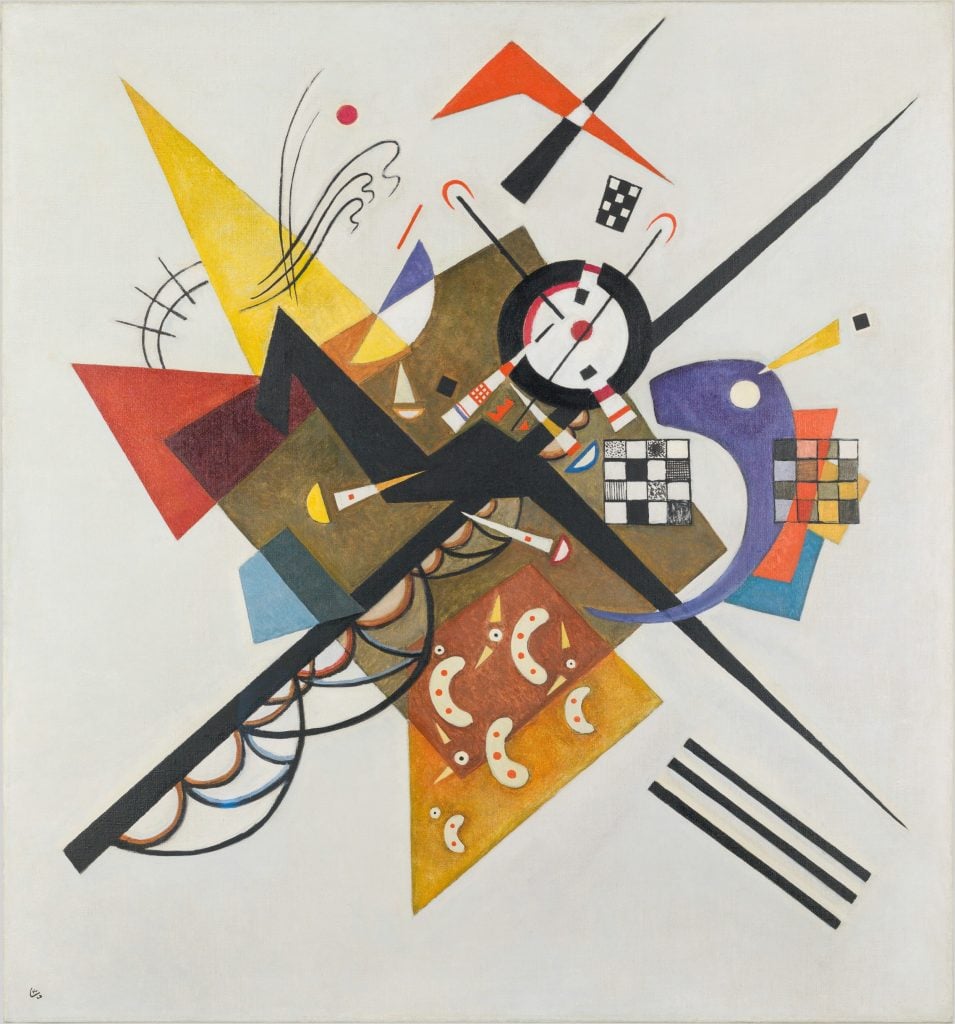
“Form itself, even if completely abstract,” Wassily Kandinsky once said, “has its own inner sound.” By that measure, the new exhibition at the H’ART Museum must be a symphony. At “Kandinsky,” the Amsterdam institution, in partnership with the Centre Pompidou in Paris, has brought together 60 of the painter’s works to trace his creative journey from evocative figuration to thrilling abstraction.
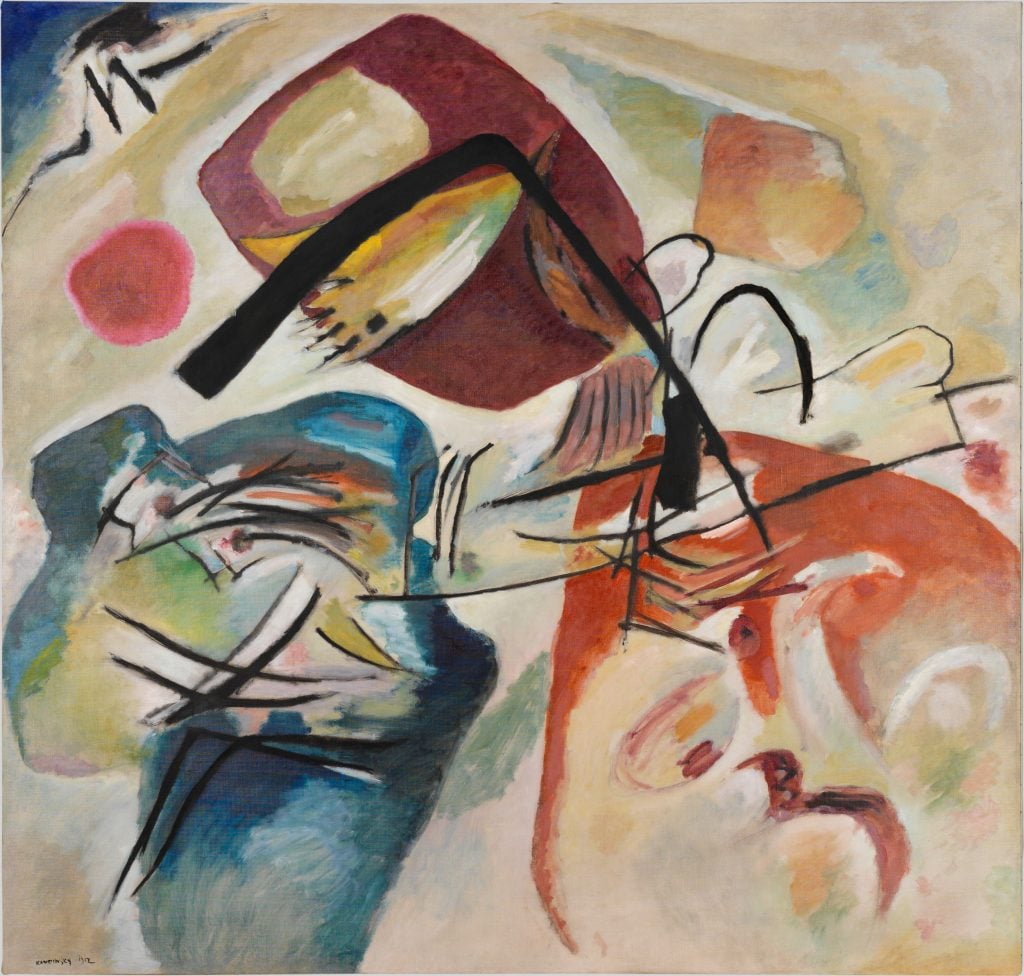
Wassily Kandinsky, Mit dem schwarzen Bogen (Avec l’arc noir) (1912). Photo: Centre Pompidou, MNAM-CCI/Hélène Mauri/Dist. RMN-GP.
Among the show’s highlights is Mit dem Schwarzen Bogen, the artist’s 1912 composition that epitomizes his reach for autonomous figuration over naturalistic representation. The painting is constructed with thick black lines, conjoined by organic shapes and a dance of colors. Its movement and dissonance were purposeful and inspired by the musical work of Kandinsky’s friend Arnold Schönberg.
“‘Today’s’ pictorial and musical dissonance,” he wrote to the composer in 1911, “is nothing more than ‘tomorrow’s’ consonance.”
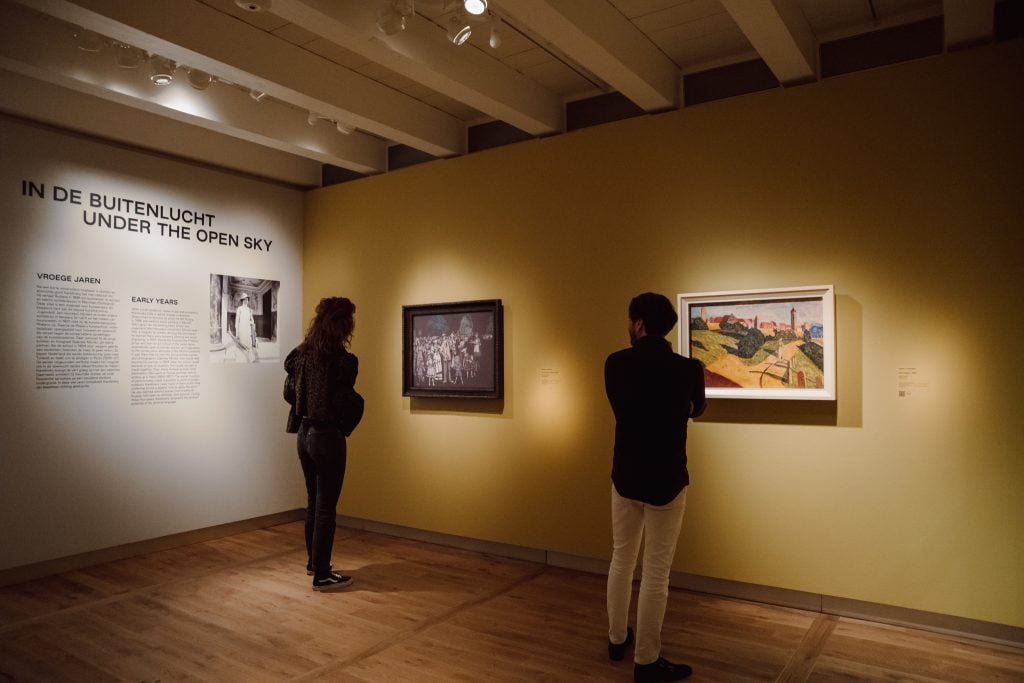
Installation view of “Kandinsky” at H’ART Museum. Photo courtesy of H’ART Museum.
It was decades before Kandinsky arrived at his pioneering understanding of abstraction. Born in Moscow in 1866, he later landed in Munich, Germany, where, deeply inspired by Monet, he gave up a career in law and economics for art at age 30.
Where his early landscapes, including The Blue Rider (1903), presented a post-Impressionist bent, he began embracing an expressive figuration after spending his first summer in Murnau. There, the town’s colors, light, and local folk art also prompted Kandinsky to develop his artistic theories, contained in 1911’s Concerning the Spiritual in Art.
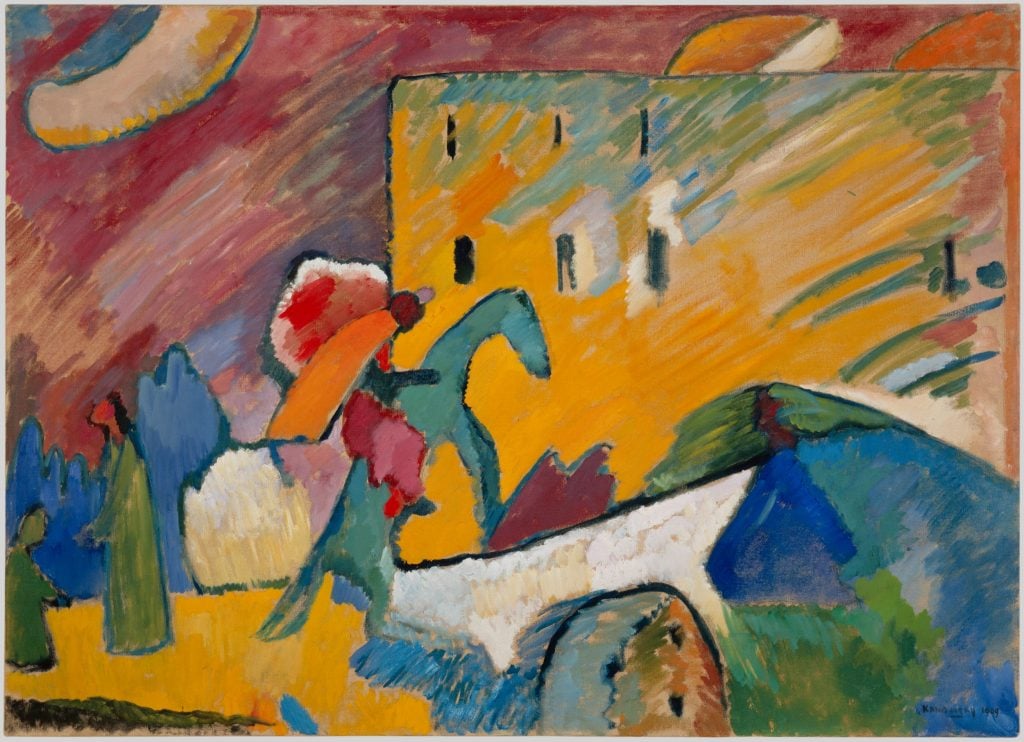
Wassily Kandinsky, Improvisation 3 (1909). Photo: Centre Pompidou, MNAM-CCI/Adam Rzepka/Dist. RMN-GP.
This turning point for Kandinsky is highlighted in the H’ART Museum exhibition with paintings such as Improvisation 3 (1909) and Impression V (Parc) (1911), that bear out his experiments in hybrid forms. The period culminates with Bild mit rotem Fleck (1914), a striking work in which the painter’s dissonance achieves dynamism.
Also central to the show is Kandinsky’s association with the Bauhaus from 1922. While teaching at the school in Weimar, he developed his study on points and lines, writing Point and Line to Plane (1926), a book that would come to be highly influential in 20th-century art. It’s during this time that Kandinsky’s art leaned into geometry with a no less cosmic weightlessness, as seen in 1923’s On White II.
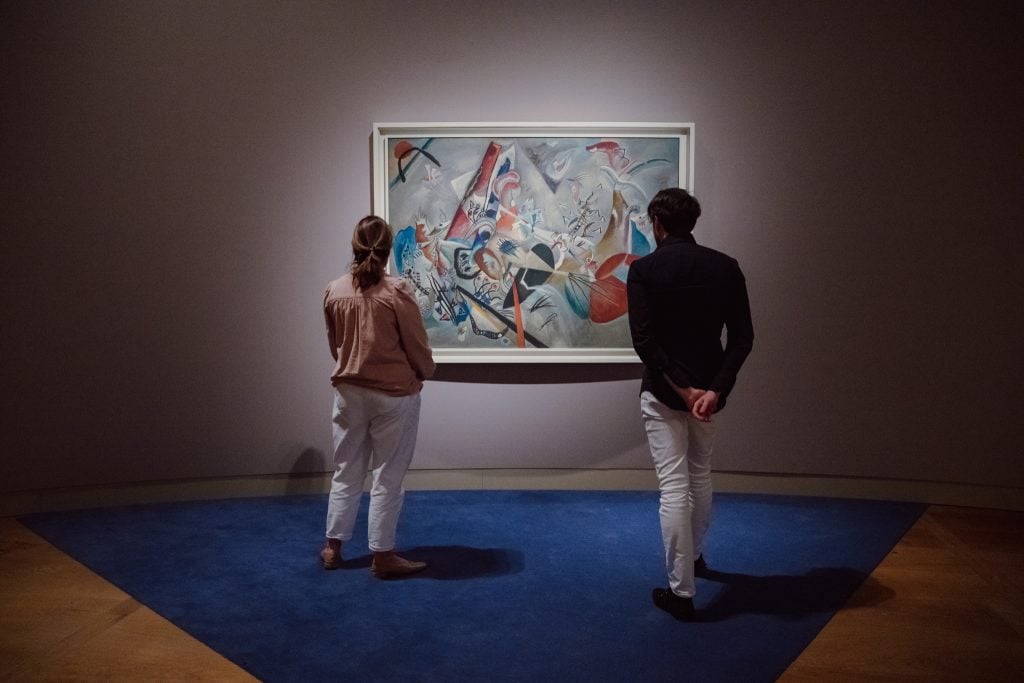
Installation view of “Kandinsky” at H’ART Museum. Photo courtesy of H’ART Museum.
From this phase, too, “Kandinsky” will also feature the murals that the artist painted with his students for the 1922 Juryfreie Kunstschau (Jury-Free Art Show). While the original panels have been lost, this reconstruction, featuring the same colors, forms, and dimensions, was faithfully made under the guidance of Nina Kandinsky for the opening of the Centre Pompidou in Paris in 1977.
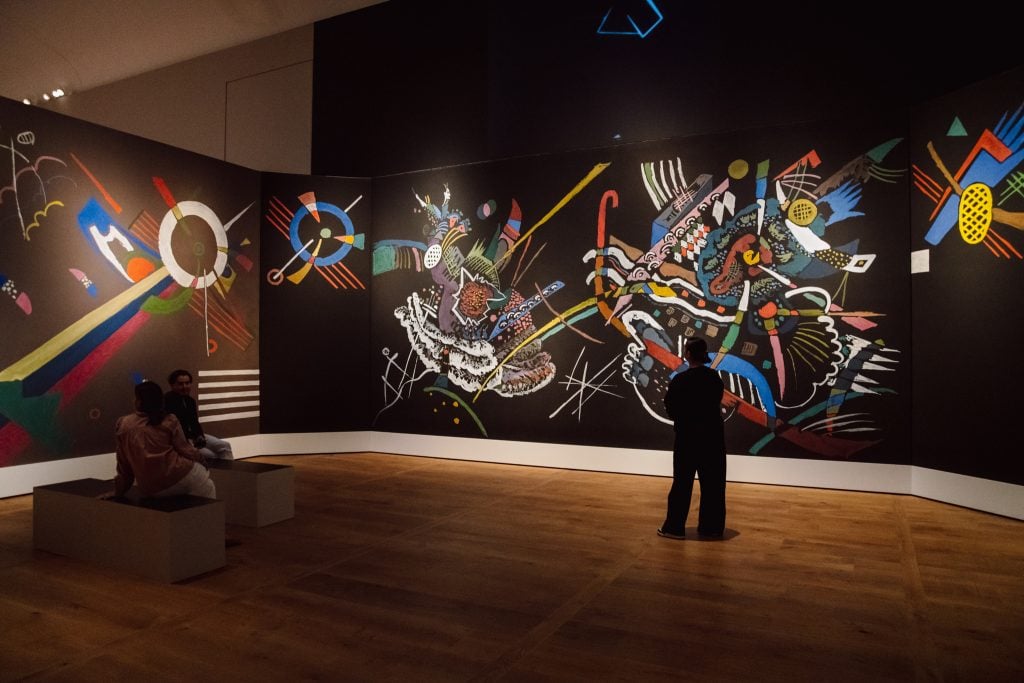
Installation view of “Kandinsky” at H’ART Museum. Photo courtesy of H’ART Museum.
The couple relocated to Paris in Kandinsky’s later years, where he painted such vital works as Entassement réglé (1938) before he died in 1944. Nina would ensure his legacy, gifting a large trove of his artworks and the contents of his studio (including drawings, watercolors, and graphic works) to the Pompidou. In 1979, she established the Kandinsky Society, headquartered at the museum, which oversaw the publication of his catalogue raisonné. The organization folded in 2015.
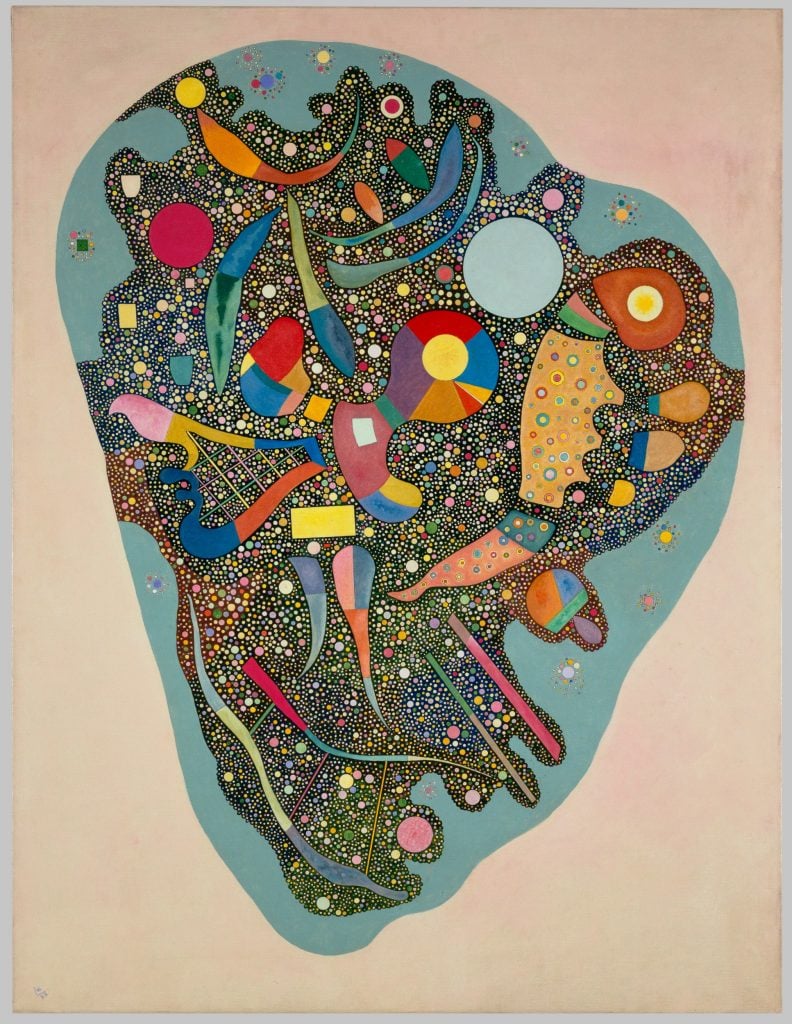
Wassily Kandinsky, Entassement réglé (1938). Photo: Centre Pompidou, MNAM-CCI/Bertrand Prévost/Dist. RMN-GP.
“Kandinsky” marks the first exhibition at the H’ART Museum, after it severed ties with its parent institution, the Hermitage Museum in St. Petersburg. The show was first presented at the Centre Pompidou in 2009.
“Kandinsky” is on view at the H’ART Museum, Amstel 51, Amsterdam, the Netherlands, through November 10.





